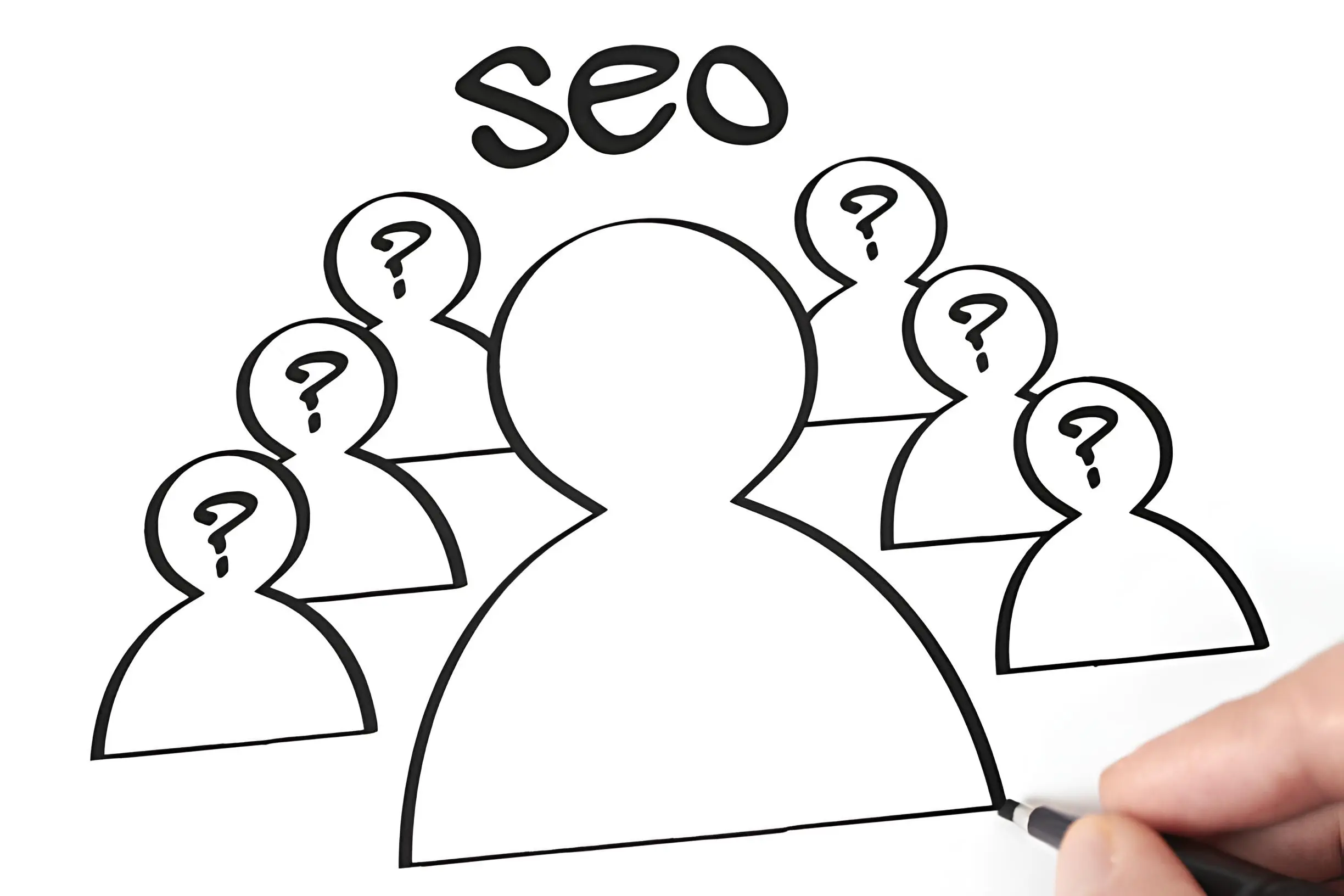Annotation
The world of search is rapidly changing: generative AI systems like ChatGPT, Gemini, Perplexity, and Google AI Overviews are increasingly producing ready-made answers rather than lists of links. This is giving rise to a new strategy— GEO (Generative Engine Optimization), aimed at making your content cited source for such answers. In this article, we explore the key SEO and GEO trends in 2026, present relevant research and insights, provide a practical transition strategy, and show real-world examples.

What is SEO and GEO: What's the Difference?
Introduction to the concept of GEO
GEO is content optimization for AI searches, with the goal of having generative systems reference your text when generating answers. Unlike SEO, where the goal is to gain a ranking, GEO aims to be source of the quote.
According to Wikipedia, GEO is a field that purposefully optimizes content for visibility in AI reactions, such as ChatGPT, Gemini, and Perplexity. Wikipedia +1
SEO vs. GEO: A Comparative Analysis
| Parameter | SEO | GEO |
| Target | Traffic, positions | AI citations, mentions |
| Approach | Keywords, links, content | Structure, EEAT, Q&A formats |
| Ranging | According to the issuance algorithms | According to the algorithms of generative engines |
| Format | Links, pages | Answers, quotes, highlighted blocks |
For example, in the study Generative Engine Optimization: How to Dominate AI Search The authors show that generative search engines exhibit systematic bias in favor of "earned media" (third-party authoritative sources) over brands' own content. arXiv
That is, to be cited, you need to work not only with the site, but also with media, external mentions and links.
Current SEO + GEO Trends in 2026
1. The Evolution of AI Overviews and Zero-Click Search Results
Google and other search engines are increasingly inserting at the top of search results generative responses (AI Overviews), where the text is generated based on multiple sources. Numerous reviews claim that such answers displace clicks: users receive information directly from the search results. Hiilite Web Design + Marketing + SEO+2Backlinko+2
2. The growing importance of generative citation
It's not just about being on the first page, it's about being linked to by AI. source. At the same time, as revealed in the empirical analysis of the model AI Answer Engine Citation Behavior, factors related to metadata, HTML structure, and content freshness have a significant impact on the likelihood of being cited. arXiv
3. Integration of SEO, GEO and AEO
Answer Engine Optimization (AEO) is a strategy for optimizing for direct answers (e.g., voice assistants, "answer question" blocks) and is increasingly considered as part of an overall visibility strategy, along with SEO and GEO. Wikipedia+2Easy Link+2
The article “Search Engines in 2026: AEO vs GEO vs SEO” emphasizes that a successful strategy is not a choice between, but synthesis of SEO + GEO + AEO. OneDot
4. AI-formatted content
AI systems prefer content with a clear structure: headings, lists, Q&A sections. Articles with structured information are more easily cited. Wildly and other sites recommend using multimedia, diagrams, and tables to improve comprehension and citation rates. All in One SEO+2Backlinko+2
5. Emphasis on semantics and the role of intents
Modern research (such as Role-Augmented Intent-Driven GSEO) shows that optimizing for role and intent is more effective than just keywords. arXiv
Another approach is a system Content-Centric Agents, where content is adjusted automatically, taking into account the impact on the final answers, rather than the exact word forms. arXiv
6. Combating brand bias and strengthening niche brands
AI favors well-known brands, but niche players can use a strategy of active citations and mentions. One of the main problems with GEO is big brand bias - when AI favors big names. arXiv+1
Therefore, it is important for niche sites to actively increase external mentions, high-quality publications, and expert links.
7. Automation and adaptation of content
Concept AutoGEO Algorithms that automatically analyze how AI cites content and rewrite it to fit preferred formats are already beginning to be implemented. purgedigital.com.au+1
This provides an advantage in terms of speed of response to changes in AI algorithms and citation trends.

Transition Strategy: How to Adapt to 2026
Below is a detailed step-by-step plan with examples and recommendations.
Stage 1: Audit and citation analysis
- Check the technical fundamentals of SEO: speed, mobile, accessibility of content without JavaScript, correct HTML, metadata.
- Make a list of keywords for your segment and check Is your website cited in AI responses? (ChatGPT, Perplexity, Gemini).
- Collect data: which sections are cited, which sites mention you, which pages do not.
- Use metrics from GEO research—structure quality, freshness, presence of markup—as benchmarks. arXiv+1
Example:
An educational project website in Uzbekistan discovered that articles about "online programming courses" ranked well in SEO but were never cited in AI results. After adding a FAQ, highlighting key facts, and structural markup, citations began appearing in Perplexity within a month.
Stage 2: Brand Style + Consistency
— Identify topics in which you want to be quoted: for example, "SEO in Uzbekistan," "AI marketing," "local SEO."
— Install uniform tone, vocabulary, formatting — so that AI “reads” you as a single brand.
— Apply this style to all channels: blog, social media, external platforms.
— When publishing on third-party media, ensure that mentions contain the correct attributes (brand name, context).
Example:
Kelyan Media decided to promote the topic of "AI SEO in Uzbekistan." Each article and social media post used the same title, terminology, and designations. Within a month, AI models began citing them as expert sources for queries like "AI SEO in Tashkent."
Step 3: Adapting content to GEO
— Structure your articles into a format question and answer: the headings are like questions, with clear answers underneath them.
— Turn on the blocks FAQ, tables, lists, key facts and quoted sentences.
— Use markup (Schema.org) — FAQ, HowTo, Article, Organization.
— Internal linking: connect articles logically so that the AI sees a coherent network of knowledge.
— Indicate authorship, update date, and links to authoritative sources.
Example:
The marketing portal implemented FAQ blocks in its SEO articles, tagged FAQs using JSON-LD, and began receiving citations in AI responses to questions like "how to optimize a website in 2026."
Stage 4: Content Distribution and Ecosystem
— Publish on industry platforms (vc.ru, habr, Medium) with brand mentions and links.
— Provide commentary, interviews, expert columns — create external links and quotes.
— Transform content: videos, podcasts, embedded recordings — and publish transcripts.
— Maintain activity on social media, Telegram, LinkedIn — AI “looks” at media signals.
Example:
The marketing agency contributed expert commentary to webinars and industry media articles, and within six months, its brand was regularly mentioned in ChatGPT responses on key topics.
Stage 5: Monitor, adjust, iterate
— Monitor citation rates: how often AI mentions your domain in response to queries.
— Analyze traffic coming from AI responses (implicit clicks).
— Look at behavioral metrics (browsing depth, time on page).
— Regularly update content and adapt it to new demands, trends, and findings.
— Experiment with formats—short paragraphs, lists, highlighted phrases—and analyze what the AI most often chooses for citation.
Example:
Kelyan Media applied citation analysis in Perplexity: by updating old articles, adding FAQs, and editing the structure, they achieved a 45% increase in citations and a 20% increase in applications.

How to choose a neural network for SEO and GEO tasks
When choosing a model or tool, focus on:
— Content Type: Long articles, landing pages, short answers, cards
— Promotion region: Uzbekistan, Tashkent, CIS
— Language support: Russian, possibly Uzbek
— Integrations: WordPress, Google Docs, CMS, API
— Budget: GPT/Claude subscriptions or local tools
The optimal combination remains GPT-4o + YandexGPT + Writesonic, as it combines power, localization and speed.
Success Metrics, Pitfalls, and Forecasts for GEO Development
Metrics of Success in the GEO Era
When the primary KPI becomes not just search ranking, but citation rates in AI responses, it's important to reconsider what exactly to measure and how.
Here is a set of metrics and approaches that will help you objectively evaluate the effectiveness of GEO strategies:
- GEO scores / citation impact score
Study “AI Answer Engine Citation Behavior (GEO-16 Framework)” shows that pages that satisfy at least 12 of the 16 "quality columns" have a high probability of being cited. arXiv
The authors propose a normalized GEO-score G (from 0 to 1) associated with the probability of a page being linked to in AI responses. arXiv - Mentions share in AI responses
The number of times your domain/content is cited in keyword searches (ChatGPT, Perplexity, Gemini). This can be recorded manually through prompts or through AI Visibility Tools, as offered in the SearchEngineLand GEO sections. Search Engine Land - AI traffic and hidden transitions
Since many AI responses don't lead to clicks, some traffic is lost within the response. However, you can still track how many users subsequently click through to your website. Use UTM tags and "read more" or "learn more" events in your response text. - Engagement and retention rates
The transition to the AI response should lead to quality content:
— viewing depth
— time on page
— failure rate
— clicks on internal links
5. If users quickly leave after clicking through, it means the AI quote is appealing, but the site doesn't provide a complete answer.
Citation dynamics/G-score growth
Track how your pages' GEO rankings change over time—whether they're growing or how quickly they respond to content changes.
Traps and pitfalls to avoid
— Too much “AI-enhanced” without logic and readability
Some SEO specialists try to insert artificial structures just to get an AI response, forgetting about the reader. This can result in the text becoming mechanical and incomprehensible, and the AI may "bypass" it when citing.
— Ignoring “earned media”
As shown in the scientific work Generative Engine Optimization: How to Dominate AI Search, AI systems systematically favor third-party authoritative sources over brand content. arXiv
There's no point in making the best content if no one links to your source.
— Excessive scaling without quality control
Generating large volumes of text without monitoring GEO metrics can lead to “weak” pages that compete with each other and dilute citation rankings.
— Dependence on one AI model
ChatGPT, Gemini, and Perplexity responses may choose different sources. A sufficiently diverse approach is needed—adapting to different engines, rather than simply "uploading a single version."
— Content obsolescence
Freshness is one of the key factors in AI citation rates. An article from 2020 will likely not be selected, even if it is technically sound.
Forecasts and evolution of GEO in the coming years
— Reduction of traditional search
Gartner predicts that traditional search traffic could decline by ~25% by 2026 due to the rise of generative search engines. Timmermann Group+1
This means that some of the audience will simply not click on the links, receiving the answer directly in the search results.
— Increased “brand bias” and competition for citations
In research GEO It has been proven that large brands have an advantage in AI citations. arXiv
Niche and mid-sized sites will have to actively increase external mentions to compete.
— Automation of GEO optimizations
Models and systems are already emerging that can automatically rework pages to increase their GEO score (AutoGEO, Role-Augmented Intent-Driven GSEO). arXiv+1
This will become an important tool in the arsenal of SEO agencies.
— The growth of interlingual and multiregional strategies
AI engines work with content in different languages, so websites with multilingual localization will have an advantage.
— The new role of metadata and semantic layers
Metadata, JSON-LD, and a knowledge graph will all become the bare minimum required to be included in AI responses.
Research examples and insights
— In the study AI Answer Engine Citation Behavior It has been shown that pages with high metadata and freshness scores have a higher likelihood of being cited. arXiv
— In conclusion Generative Engine Optimization It is claimed that AI systems tend to favor earned media, and brands must build external mentions to compete. arXiv
- Article SEO for AI Engines recommends using structured markup and formatting, keeping answers short and under headings, and combining text and multimedia. Brands at Play
— The Onedot review emphasizes that by 2026, it is necessary to integrate SEO, GEO, and AEO—the entire spectrum of visibility. OneDot
Conclusion and recommendations
In 2026, the winners are not those who are simply in high positions, but those whose texts quoted AI. SEO remains the foundation, but GEO is key to today's competitive landscape.
To be successful:
- Audit citations—not just positions.
- Create a unified brand signal and consistency across all channels.
- Reformat the content into question-and-answer blocks, FAQs, and structured sections.
- Distribute content through external resources, quotes, and media.
- Monitor and adapt strategies regularly.







